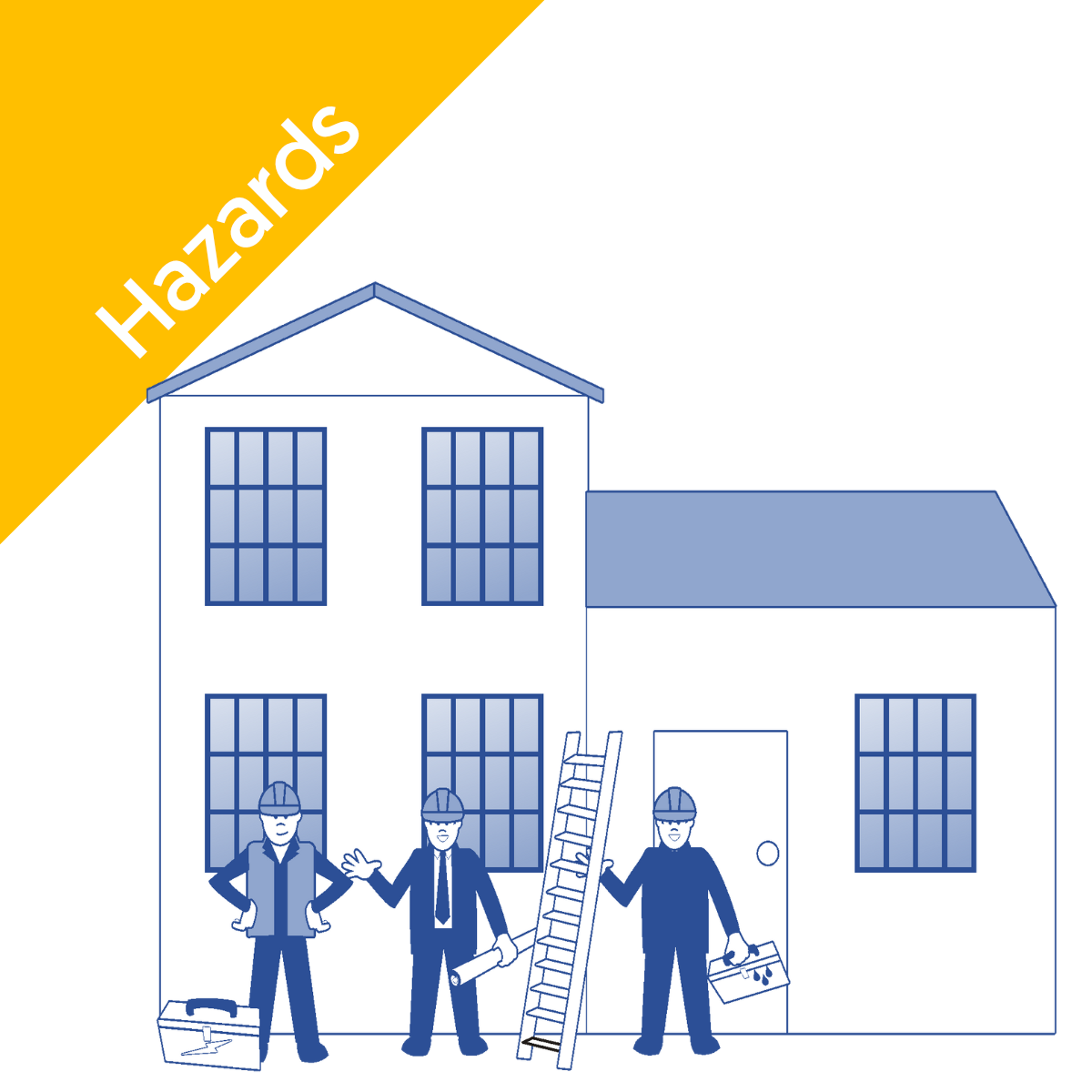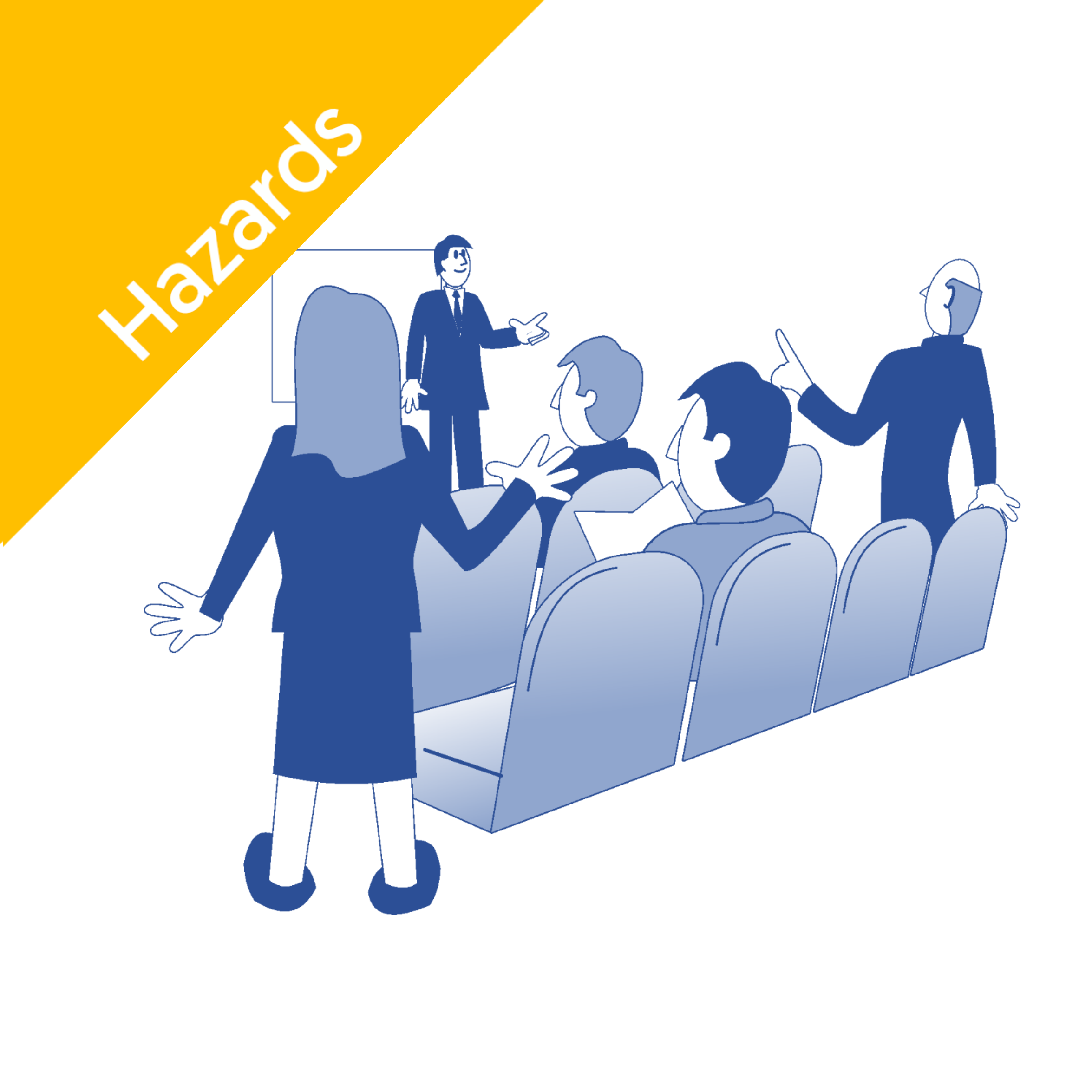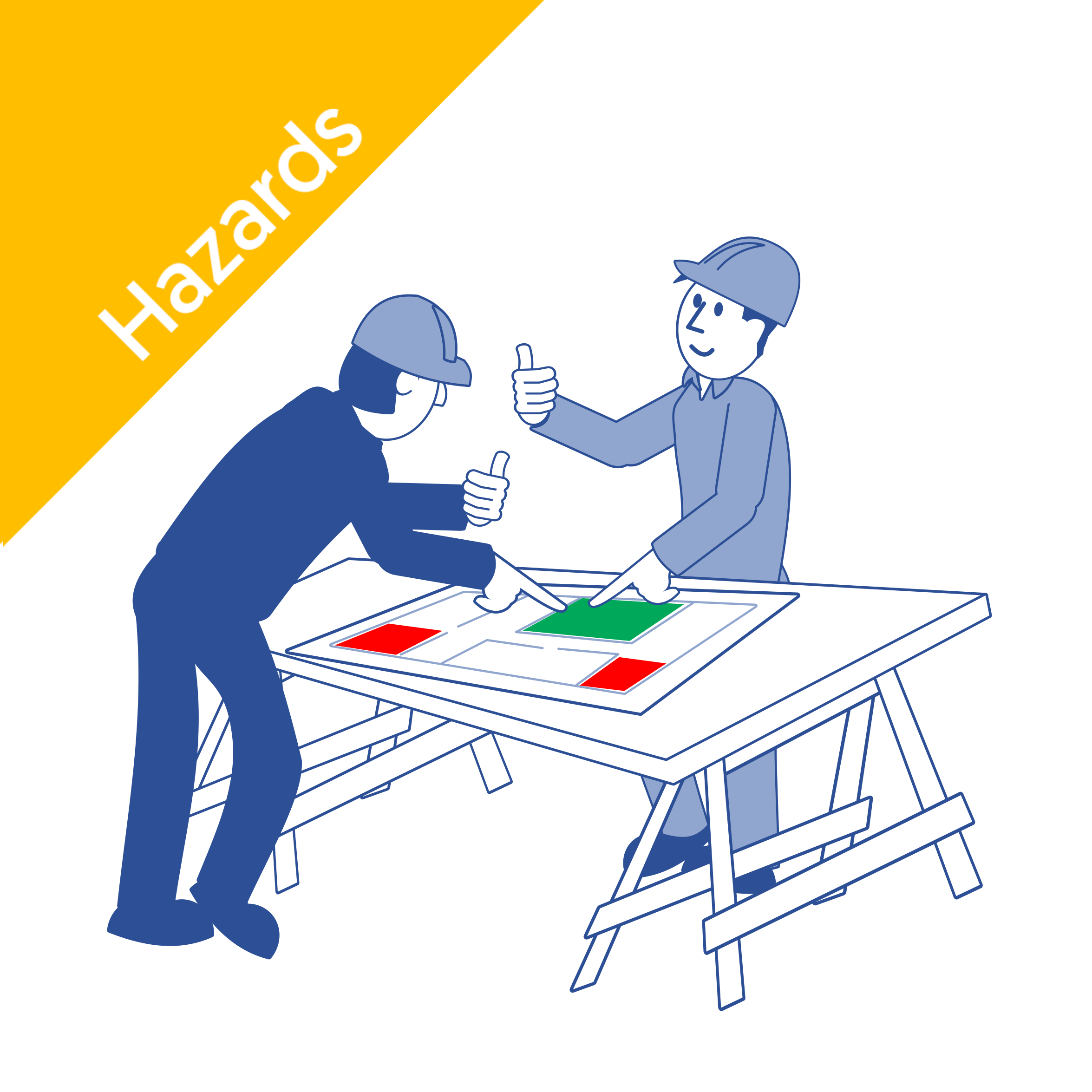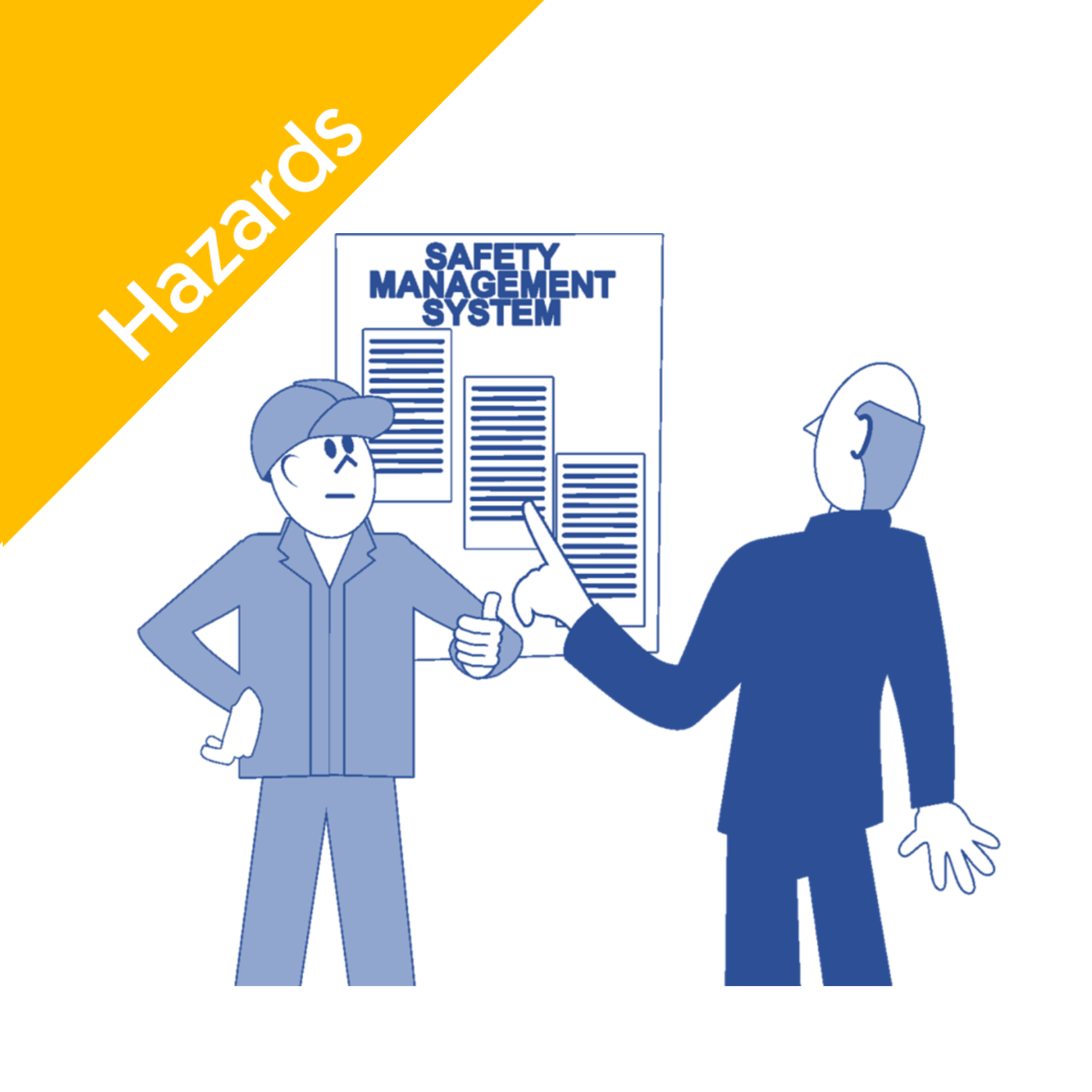Always assume the presence of asbestos unless proven otherwise by a professional survey.
ACMs: Asbestos Insulating Board (AIB)
Asbestos Insulating Board, or AIB, is a common source of exposure. It was used extensively in buildings before 2000 due to its fireproofing and insulation properties.
Where You Might Find AIB
- Partition walls and bulkheads in ceilings.
- Ceiling tiles and fire door panels.
- Lift shaft linings and structural linings.
Risks and Handling
- Even minor maintenance tasks on AIB can release asbestos fibres.
- Some work on AIB can be done by trained non-licensed workers, but it must be properly risk assessed.
- Never disturb AIB unless you have the correct training and equipment.
ACM: Cement
Asbestos cement is a common building material that was widely used before 2000. While it contains a lower concentration of asbestos compared to other materials, it can still release fibres if disturbed.
Where You Might Find Asbestos Cement
- Inside: Water tanks and wall panels.
- Outside: Roof tiles, gutters, downpipes, and soffits.
Handling and Risks
- Work on asbestos cement is typically non-licensed but requires training and a risk assessment.
- Cutting, drilling, or sanding asbestos cement can release dangerous fibres.
- Always wear PPE and follow proper guidelines.
ACM: Asbestos Pipe Lagging
Asbestos pipe lagging is one of the most dangerous forms of ACM. It was used to insulate pipes, especially in older buildings.
Where You Might Find Asbestos Pipe Lagging
- Around boilers and heating systems.
- On pipework in basements, lofts, and utility areas.
Why It’s High Risk
- Pipe lagging often contains friable asbestos, meaning it easily crumbles and releases fibres into the air.
- Damaged pipe lagging is particularly hazardous and should never be disturbed.
What to Do If You Find It
- Do not touch the pipe lagging.
- Any work on pipe lagging must be done by an HSE-licensed contractor.
What Should You Do Before Starting Work?
1. Check for Asbestos
- Was the building constructed or refurbished before 2000?
- Is there an asbestos register or survey available?
- Plan your job to avoid disturbing ACMs.
2. Talk to Your Employer
The Control of Asbestos Regulations 2012 is the primary legislation overseeing the management of asbestos in the workplace. This guidance text sets out the legal requirements and an approved code of practice for employers. So, talk to your employer about the ACM risk assessment and ensure safety measures are in place. If you’re a sole trader, the Control of Asbestos Regulations say that you have the same legal responsibilities and you must take the same precautions.
What to Do If You Find Asbestos
If you suspect or find an ACM while working:
- Stop work immediately.
- Speak to your employer or the building owner.
- Ensure a licensed asbestos contractor assesses and removes it if necessary.
Never work on any type of asbestos unless you’re trained and authorised. Removal of asbestos should only be handled by a professional with a license.
Licensed vs. Non-Licensed Asbestos Work
The category of asbestos work depends on the level of danger involved in the work. Non-licensed work includes tasks like removing asbestos-cement roofing, provided the material is intact. Licensed work, on the other hand, involves high-risk tasks such as removing pipe lagging or loose-filling asbestos.
Non-Licensed Work
For lower-risk materials like cement panels or vinyl floor tiles, you need:
- A risk assessment.
- Proper training in non-licensed asbestos work.
Licensed Work
High-risk materials, such as pipe lagging or loose-fill asbestos, must only be handled by HSE-licensed contractors.
Essentials: HSE Tips for Every Job
Final Thoughts on Working with ACMs
Asbestos is a silent killer, but with the right knowledge and precautions, you can stay safe from the risk of asbestos exposure. Always be aware of the risks and follow the steps outlined here. For more detailed guidance and resources, visit the Asbestos and You campaign.
This guide is designed to keep you informed and safe on every job. Share it with colleagues to spread awareness and prevent exposure to this hidden danger.
Further Reading

Asbestos
Stay safe and informed with the new "Asbestos and You" campaign by HSE. Learn more about the significance of asbestos health and safety in the UK.

Asbestos
Understand the three types of asbestos training: awareness training, non-licensed training, and licensed work. Ensure your employees receive the right level of training to minimise asbestos exposure risks.

Asbestos
Understand the updated HSE’s Asbestos: The Analysists Guide 2021 HSG248. Learn about key changes, soil risks, lab testing updates, and ensuring worker safety.

Asbestos
UKATA or IATP? Learn the difference in asbestos awareness training. Choose accredited courses for safety and success. Find out more now.

Asbestos
Introducing the new Asbestos - Your Duty campaign on our blog. Stay informed on your duty to manage asbestos in buildings predating the year 2000.

Asbestos
Discover a complete duty holder guide to managing asbestos, from identifying risks and creating a plan to maintaining an asbestos register and ensuring safety compliance.

Asbestos
Stay safe and informed with the new "Asbestos and You" campaign by HSE. Learn more about the significance of asbestos health and safety in the UK.

Asbestos
Understand the three types of asbestos training: awareness training, non-licensed training, and licensed work. Ensure your employees receive the right level of training to minimise asbestos exposure risks.

Asbestos
Understand the updated HSE’s Asbestos: The Analysists Guide 2021 HSG248. Learn about key changes, soil risks, lab testing updates, and ensuring worker safety.

Asbestos
UKATA or IATP? Learn the difference in asbestos awareness training. Choose accredited courses for safety and success. Find out more now.

Asbestos
Introducing the new Asbestos - Your Duty campaign on our blog. Stay informed on your duty to manage asbestos in buildings predating the year 2000.

Asbestos
Discover a complete duty holder guide to managing asbestos, from identifying risks and creating a plan to maintaining an asbestos register and ensuring safety compliance.










